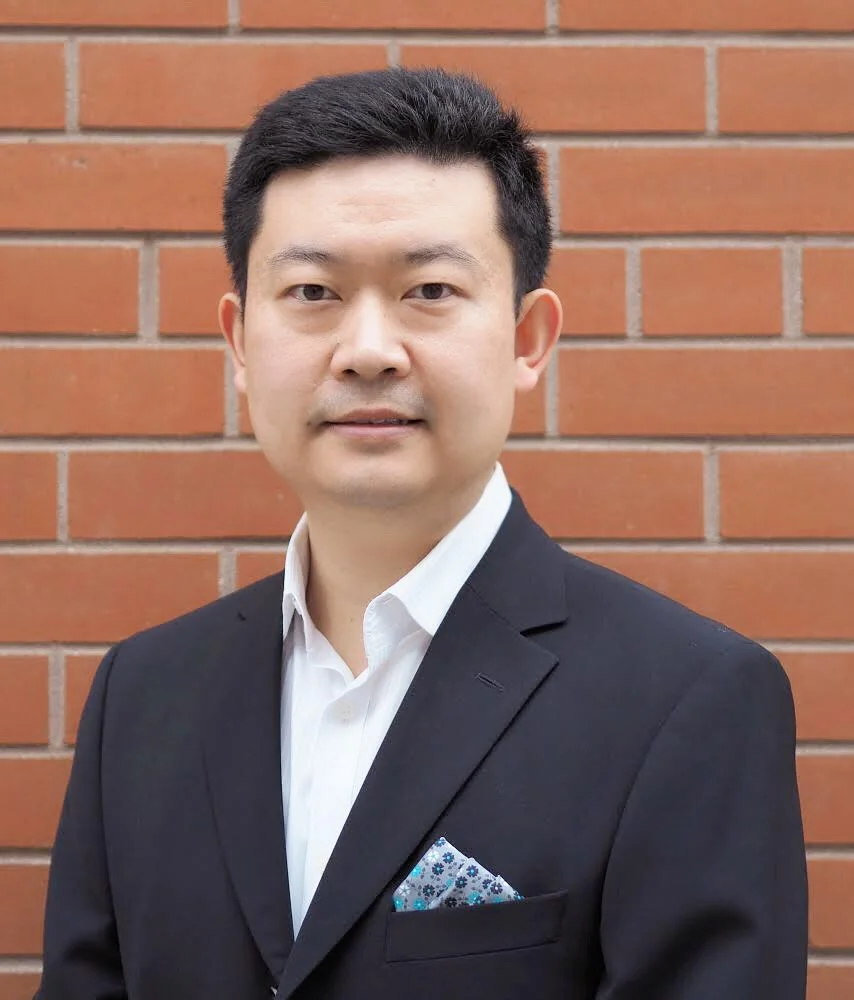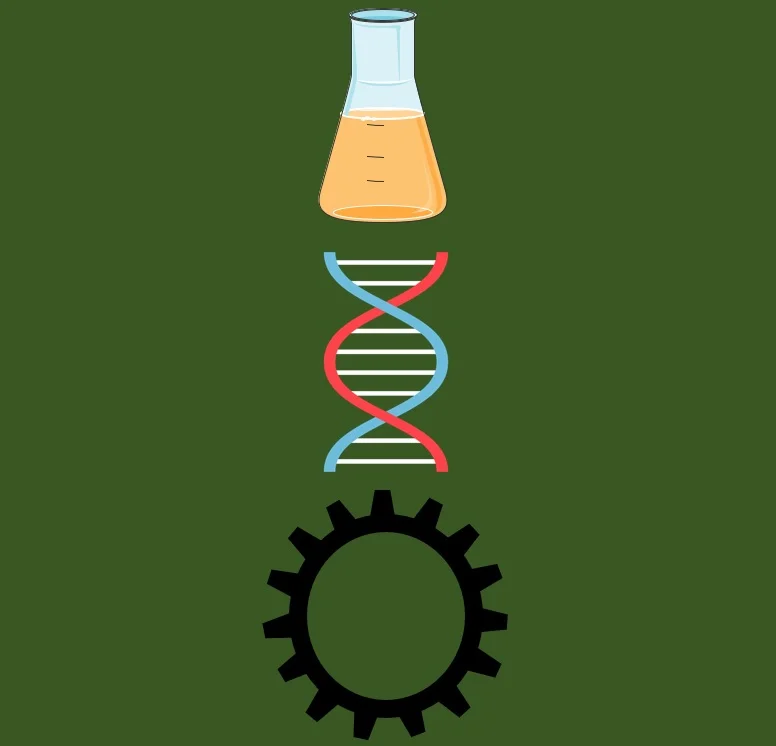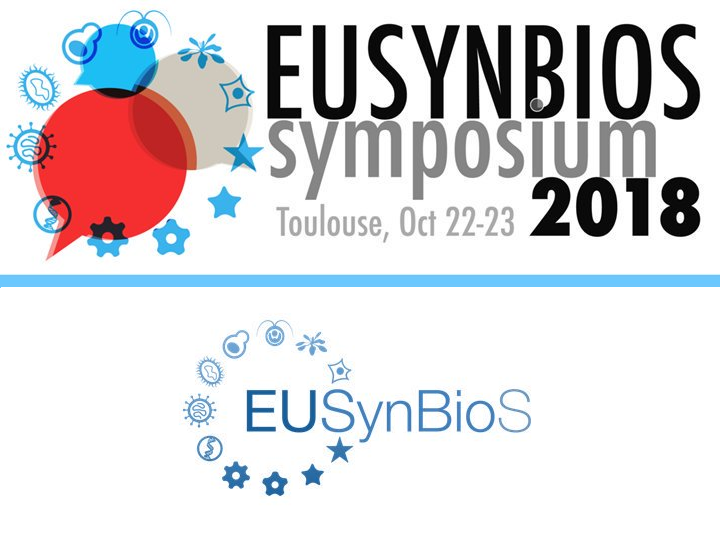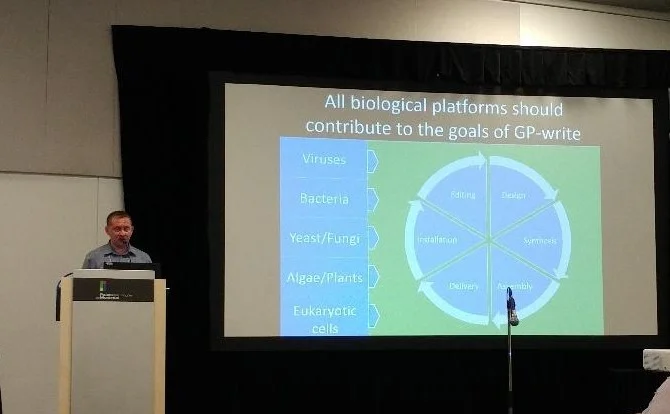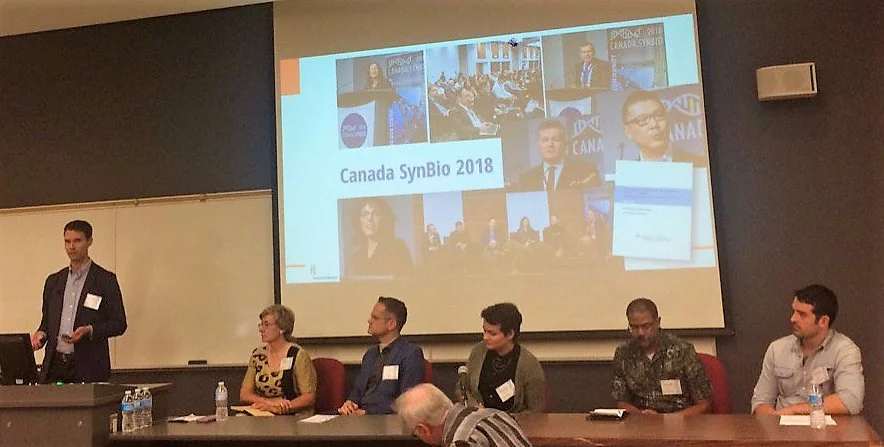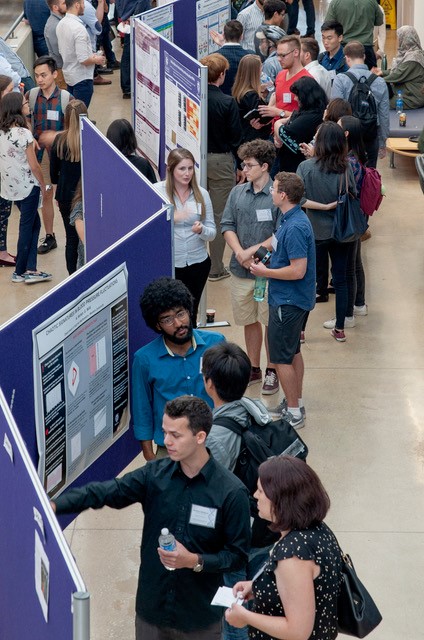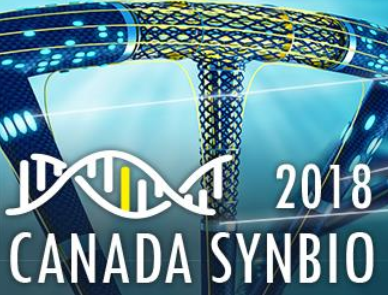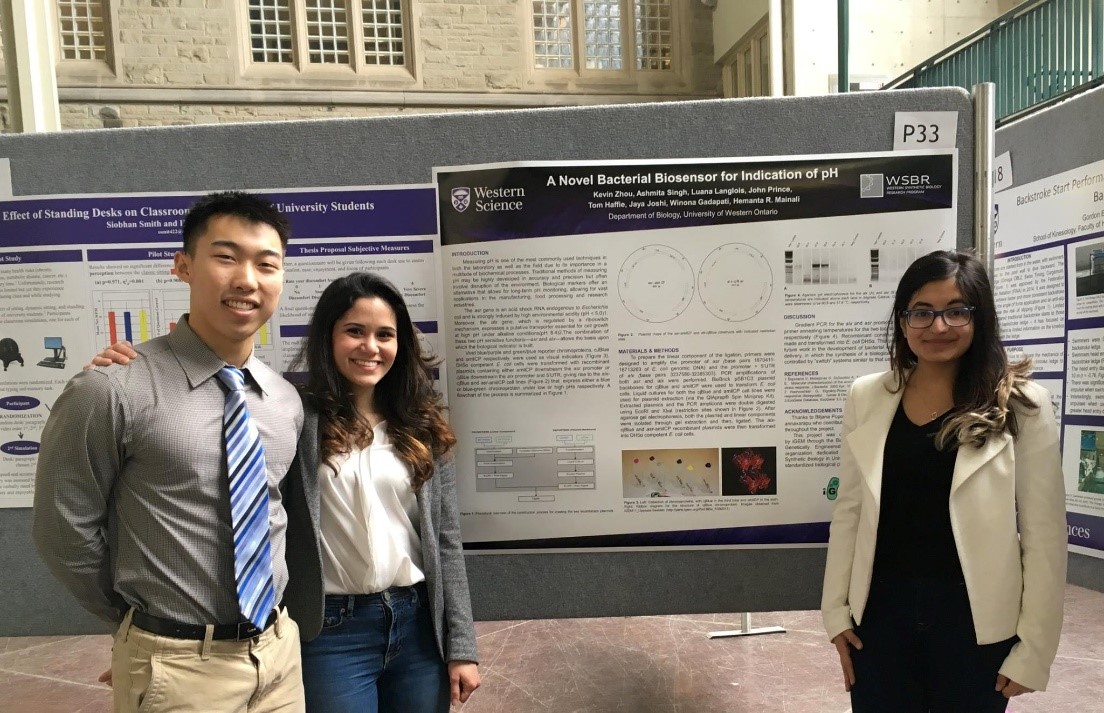NAthan Braniff - July 15, 2019
Monday morning at Waterloo SynBio 4.0. Photo courtesy of @Synbiosymp and WCMR.
Over the past three years the SynBio symposium series hosted at Western University (see our summary from last year here), has served as the primary academic venue for Canadian synthetic biology. This year, the conference significantly expanded with SynBio 4.0 hosted at the University of Waterloo, with the format moving from a one-day to three-day event (May 26-28). This year SynBio 4.0 featured researchers from a variety of Canadian academic institutions and companies, and for the first time, included a day dedicated to student-focused workshops. Here we summarize the conference activities, giving a snapshot into the diverse range of synbio research being undertaken across Canada.
Student Workshops and Panels
The first day of the conference was student focused, with workshop talks on a variety of key synthetic biology disciplines, as well as panels on the Canadian biotech industry and educational programs. The morning workshop session featured talks by Laurent Potvin-Trottier (Concordia University) on the use of mathematical models in engineering biological systems, and David Kwan (Concordia University) on the current state of protein engineering. This was followed by an industry panel featuring representatives from several Canadian companies in the biotech sector namely; Dave Conley of Aquabounty Tech., Leo Wan of Ranomics, Graham McKinnon of Carbon Patent Group, and Kevin Chen of Hyasynth Bio. The panel discussion covered a wide range of issues including approaches to networking and breaking into the industry, management of intellectual property for young companies, as well as advice on moving from academia towards founding a startup.
The afternoon workshops featured David McMillen (University of Toronto) who discussed strategies for designing synthetic regulatory circuits, and Kaushik Venkatesan (University of Toronto) who presented techniques for building more productive strains in biomanufacturing. This was followed by the afternoon panel on Canadian synthetic biology education. The panelists included Jason Grove (University of Waterloo), Kathleen Hill (Western University), Mads Kaern (University of Ottawa), Orly Weinberg (Concordia University). Kaern emphasized the need for a student-driven change in the way synthetic biology research and education are managed in Canada, and lamented the limited Canadian progress made in the past decades.
“Synbio is more about putting things together, not taking things apart, which does not fit well in traditional science departments.”
The education panel from SynBio 4.0, featuring (left to right) Kathleen Hill, Orly Weinberg, Jason Grove and Mads Kaern. Photo courtesy of Brian Ingalls.
Looking towards the future of synbio education in Canada, Wienberg gave a summary of current efforts at Concordia to construct synthetic biology focused curricula. These efforts in expanding synbio education are complementary to Concordia’s ongoing investment in its gene foundry. Similarly, Hill discussed efforts to launch synbio training programs at Western, and the various approaches to synbio education overall. Notably, these new programs at Western were initiated because of strong student support starting three years ago, in part thanks to the efforts of our Steering Committee member Samir Hamadache, and others involved in the student-driven Western Synthetic Biology Research Program. Grove compared and contrasted science and engineering, arguing that synthetic biologists are primarily engineers, due to the application focus of the field.
Post-panel discussion and questions highlighted several key needs:
The need for synbio-focused degree programs. There are currently no synbio-focused degree programs offered at any Canadian institution.
The strong need for funding of synbio education, lest Canadian research and companies fall behind international competitors due to a lack of skilled personnel.
The need for a clear definition of the skill sets to be taught in these programs, with input from industry as well as researchers. Defining the balance between fundamental skills and specific applications is a core challenge.
The need for investment and program development to scale with the growth of the Canadian biotech sector, so that graduates can transition efficiently to industry positions with a skillset matching industry demand.
The need for an education plan for the future. The biotech landscape is highly diverse and rapidly changing, it is difficult to find a one-size-fits-all solution in a single program. Planning is needed in order to offer an appropriate mixture of application specialties and graduate/undergraduate programs in a coordinated manner.
Research Talks Day 1
Conference organizers Valarie Ward, Brian Ingalls and Trevor Charles kicked off the first day of the research talks with opening remarks and introductions. Ned Budisa (University of Manitoba) gave the first keynote address, describing his groups efforts to expand the usable genetic code beyond the standard 20 amino acids. Working within this emerging subdiscipline of xenobiology, they are building the synthetic translational machinery necessary to re-code nature so unnatural or noncanonical amino acids can be included in proteins produced by engineered cells. This work has applications in protein production and bio-manufacturing, and Budisa specifically highlighted a project to produce wet-binding, bio-inspired adhesives. He noted his group is currently looking for motivated graduate students and postdocs.
The keynote was followed by a report from Bettina Hamelin. She highlighted Ontario Genomics current efforts to promote synthetic biology within the province and across the country, answering the dual questions; “Why synthetic biology and why now?”. Ontario Genomics envisions a three tiered plan for SynBio growth in Canada;
Establish technical capacity -- including the creation of genome foundries and the training of the necessary technical staff.
Create funding programs -- initially focusing on sandbox grants for disruptive projects to ‘feel’ out the tri-council, with the eventual goal of having flexible, phased-funding with a rolling-intake cycle.
Write a Canadian SynBio strategic plan -- following similar documents published by other countries like the U.S., U.K., Singapore, and Australia.
Ontario genomics is currently collaborating with other provincial and national organizations to create a SynBio Steering Committee to work towards the above goals. Hamelin concluded by saying:
“This is all about collaboration, we are too small a province - as a country we are small - collaboration is key because greatness happens together.”
Adam Radek Martinez delivering his (award-winning) research talk at SynBio 4.0. Photo courtesy of @Synbiosymp and WCMR.
Afternoon talks saw discussion about the harnessing of novel wild microorganisms and the engineering synthetic ones for bioproduction. Kenza Samlali (Shih Lab, Concordia University) presented work on the development of novel gene editing and biosensing on microfluidic chips. Kenza’s talk won the best graduate student presentation competition, which was sponsored by Carbon Patent Group. Other student talks featured many topics, including novel mitochondrial and genomic editing protocols, bioinformatic tools for engineering insect resistance and the use of engineered optogenetic tools for probing developmental pathways.
Adam Radek Martinez (Charles Lab, University of Waterloo) won best high-school/undergraduate talk for his work on the engineering of novel silver biosensors. The afternoon also featured a poster session, Sam Slattery (Western University) took home the poster prize for his work on a plasmid-based toolbox for Cas9-based genome editing.
Research Talks Day 2
The SynBio 4.0 poster session featured a diverse range of synbio research from Canadian institutions. Photo courtesy of @Synbiosymp and WCMR.
The second day of research talks began with a keynote from Wei Zhang (University of Guelph). His group has been working to make protein-protein interactions more engineerable, specifically focusing on the human ubiquitin signalling pathway. This work has a broad array of applications to human health, including the treatment of viral infections and better understanding of signalling pathways involved in cancer. The second day also saw many exciting talks from student and post-doctoral researchers, covering topics such as the development of mathematical and bioinformatic models, the engineering of bacterial-plant signalling for the coordination of nitrogen fixation, and the construction of modular, multi-host large-fragment cloning vectors.
The day concluded with an industry talk by Michael Pautler (Vineland, Platform Genetics), who discussed the current need for Canada-specific breeds of high-value horticultural crops. Currently Canadian growers use breeds that have been created specifically for European climates, and which underperform when grown here in Canada. While Vineland currently uses traditional breeding technologies (i.e. cross-breeding and mutagenesis) to address this problem, genetic engineering could play a role in helping Canadian horticulture to close this gap in the future. However, Pautler noted no GMO products are currently used in Canadian horticulture for two main reasons; 1) consumer acceptance for the technology is low because of current perceptions of genetic technologies, and 2) there is a high regulatory cost caused by the Canadian regulatory process. Pautler suggested that, in the current economic climate, if genetic engineering was successfully used to create an improved crop, it would be easier to get it approved and sold by randomly regenerating it through mutation then to proceed with the original GMO. This process is obviously inefficient. Paulter proposed addressing the regulatory barriers by standardizing and streamlining the regulatory process to make it more reasonable and efficient. He also suggested a permissive licensing of genome editing technologies would allow for their wider use. With respect public opinion, Pautler emphasized the importance in using the technology to develop crop traits that consumers care about and to clearly communicate benefits and limitations of the technology to consumers and other stakeholders.






